
- Shandong Loyal Industrial Co.,Ltd.
- Macaroni Production Machine Instant Noodle Machine Biscuit Making Machine
Home> Company News> Everything you Need to Know About Dog Food Extrusion Machine

Everything you Need to Know About Dog Food Extrusion Machine
2024-04-26 17:08:36Introduction to Dog Food Extrusion Machine
Dog food extrusion machines are pivotal in the pet food industry, revolutionizing the production of high-quality, nutritious pet food. These machines utilize advanced technology to process raw ingredients into various forms of dog food, including kibble, treats, and pellets. Operating on the principle of extrusion, these machines play a crucial role in ensuring the nutritional integrity and palatability of pet food products.
Extrusion technology has significantly evolved over the years, with dog food extrusion machines becoming more sophisticated and efficient. Initially developed for the production of human food, extrusion technology was later adapted for the pet food industry to meet the growing demand for convenient and nutritionally balanced pet food products.
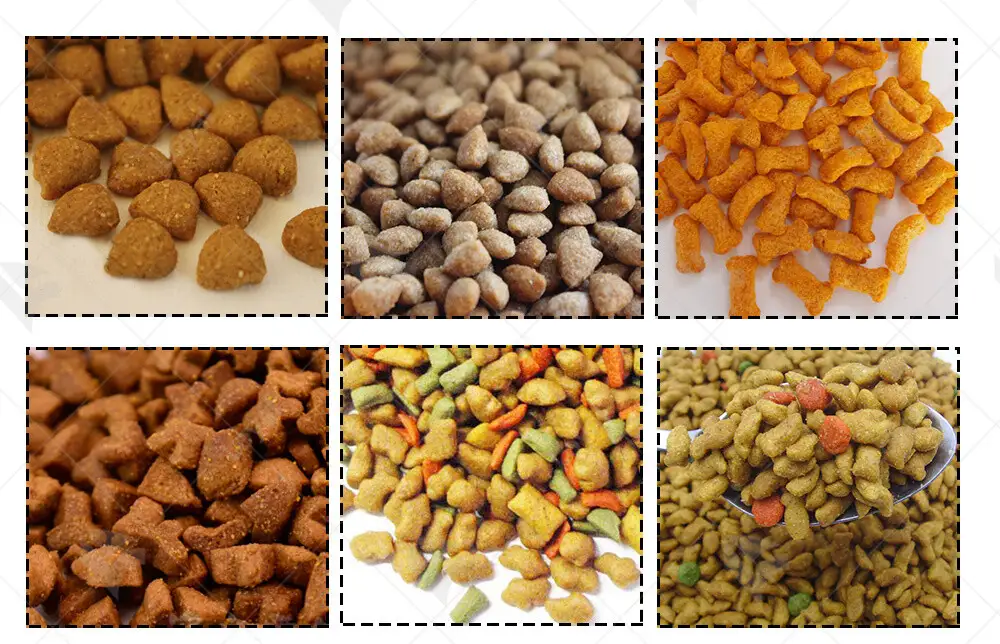
History of Extrusion Technology
Extrusion technology traces its roots back to the late 19th century when it was first utilized in the production of breakfast cereals. The invention of the extrusion cooking process by Alexander Anderson in the 1930s marked a significant milestone in the history of extrusion technology. This breakthrough allowed for the rapid expansion of the food processing industry, enabling the mass production of a wide range of food products.
In the 1950s, with advancements in materials science and engineering, extrusion technology began to gain prominence in various industries, including the pet food sector. The development of specialized extruders capable of processing animal feed paved the way for the modern dog food extrusion machines we see today. These machines are equipped with precision controls and sophisticated heating mechanisms to ensure optimal processing conditions for different types of pet food formulations.
In the pet food industry, extrusion technology has played a significant role in the development of nutritious and palatable dog food products. The ability to precisely control the ingredients, texture, and shape of the final product has enabled pet food manufacturers to meet the evolving needs and preferences of pet owners.
Over the years, advancements in extrusion technology have led to the development of more sophisticated and high-performance extrusion machines. These machines are equipped with advanced features such as automated controls, enhanced safety systems, and improved efficiency, making them indispensable tools in the production of dog food and other pet food products.
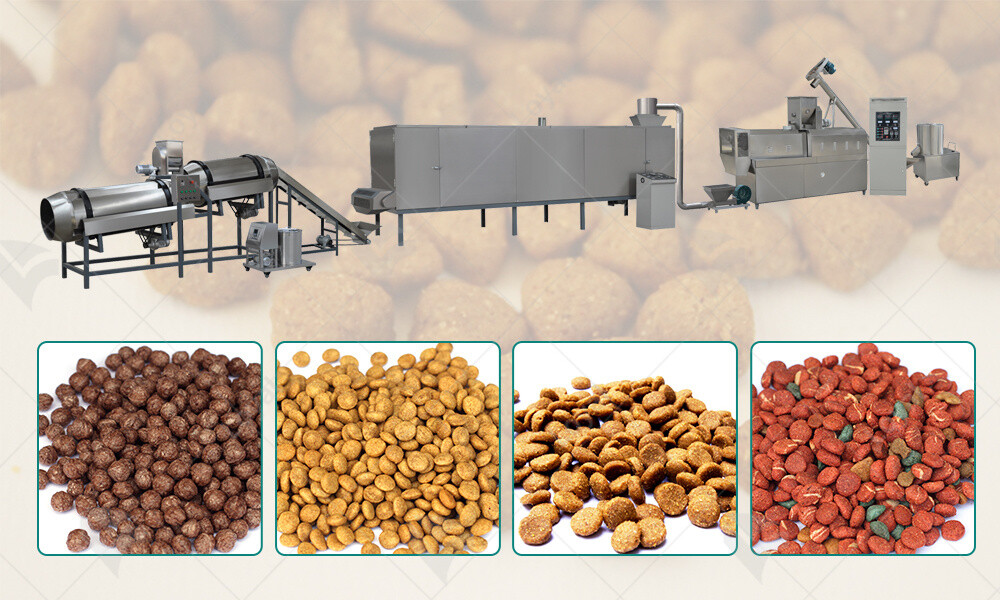
Understanding the Extrusion Process
Extrusion is a fundamental process used in various industries, including the pet food industry. It involves forcing a raw material mixture through a die to create a specific shape or form. In the context of pet food production, extrusion plays a crucial role in transforming raw ingredients into finished products that meet nutritional requirements and palatability standards for dogs.
Extrusion begins with the preparation of a blend of ingredients, including grains, proteins, fats, vitamins, and minerals. This mixture is then conveyed into the feed section of the extruder. Within the extruder, the ingredients are subjected to high temperature and pressure, typically achieved through the use of steam and mechanical shear forces. The combination of heat, pressure, and shear forces causes the ingredients to undergo physical and chemical changes, resulting in gelatinization, protein denaturation, and expansion of the mixture.
As the material moves through the extruder barrel, it experiences increasing pressure until it reaches the die. The die is a critical component that determines the shape and size of the extrudate. Once the material exits the die, it undergoes rapid expansion due to the sudden release of pressure, resulting in the formation of the final product. The extrudate is then cut to the desired length before being cooled and dried to achieve the desired texture and moisture content.
The extrusion process offers several advantages for the production of dog food, including uniform mixing of ingredients, efficient cooking and sterilization, and the ability to create products with specific shapes, sizes, and textures. Dog food manufacturers rely on advanced extrusion technology and specialized equipment, such as dog food extrusion machines, to optimize the extrusion process and ensure the consistent production of high-quality pet food products.
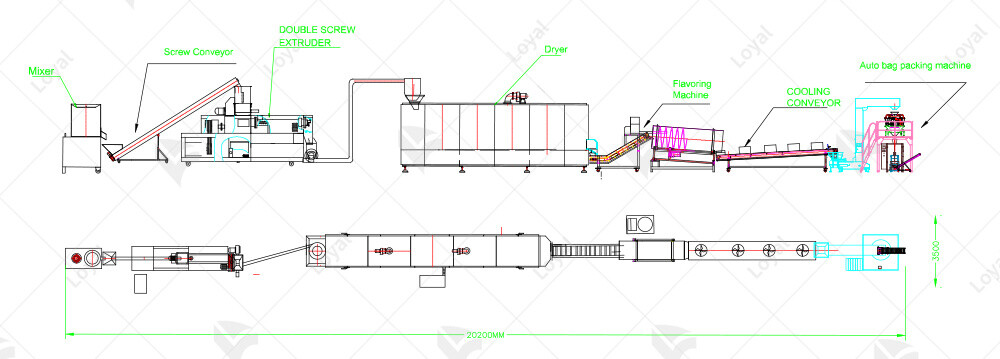
Components of a Dog Food Extrusion Machine
A dog food extrusion machine is a sophisticated piece of equipment designed specifically for the extrusion of dog food products. It consists of several key components that work together to facilitate the extrusion process and produce quality pet food.
1. Feed Hopper: The feed hopper is where the raw ingredients are initially loaded into the extruder. It provides a controlled supply of material to ensure consistent processing.
2. Extruder Barrel: The extruder barrel is a cylindrical chamber where the raw ingredients are heated, mixed, and compressed. It is equipped with heating and cooling systems to maintain optimal temperature conditions throughout the extrusion process.
3. Screw(s): Inside the extruder barrel, one or more screws rotate to convey the raw material forward while applying pressure and shear forces to facilitate cooking and shaping. The design and configuration of the screws play a critical role in controlling the extrusion process parameters.
4. Die Plate: At the end of the extruder barrel, the die plate determines the final shape and size of the extrudate. It features openings or holes through which the material is forced to form the desired product shape.
5. Cutting Mechanism: After exiting the die plate, the extrudate passes through a cutting mechanism that slices it into uniform pieces of the desired length. This ensures consistency in the final product size and shape.
6. Cooling and Drying System: Once cut, the extrudate undergoes rapid cooling and drying to stabilize its structure and remove excess moisture. This step is crucial for achieving the desired texture and shelf stability of the finished dog food products.
7. Control System: A dog food extrusion machine is equipped with a control system that monitors and regulates various process parameters, such as temperature, pressure, and screw speed. This allows operators to adjust settings and optimize production conditions for consistent product quality.

Types of Dog Food Extrusion Machines
Dog food extrusion machines come in various types, each designed to meet specific production needs and requirements. Understanding the different types can help pet food manufacturers choose the most suitable option for their operations.
1. Single Screw Extruders:Single screw extruders are the most common type used in dog food production. They consist of a single rotating screw within a cylindrical barrel. The screw rotates to convey the ingredients forward while generating heat and pressure to cook the mixture. These machines are versatile and suitable for a wide range of formulations.
2. Twin Screw Extruders:Twin screw extruders feature two intermeshing screws within the barrel. This design offers enhanced mixing, heating, and shearing capabilities, making them ideal for processing complex formulations or ingredients with varying textures. Twin screw extruders can achieve higher throughput rates and produce a more uniform product compared to single screw extruders.
3. Co-rotating Twin Screw Extruders:Co-rotating twin screw extruders have screws that rotate in the same direction. This design facilitates intensive mixing and allows for precise control over the cooking process. These machines are suitable for producing high-quality dog food with consistent texture and nutritional content.
4. Counter-rotating Twin Screw Extruders:Counter-rotating twin screw extruders have screws that rotate in opposite directions. This configuration offers excellent self-cleaning capabilities and is particularly effective for processing sticky or difficult-to-handle ingredients. Counter-rotating extruders can handle a wide range of formulations while minimizing downtime for cleaning and maintenance.
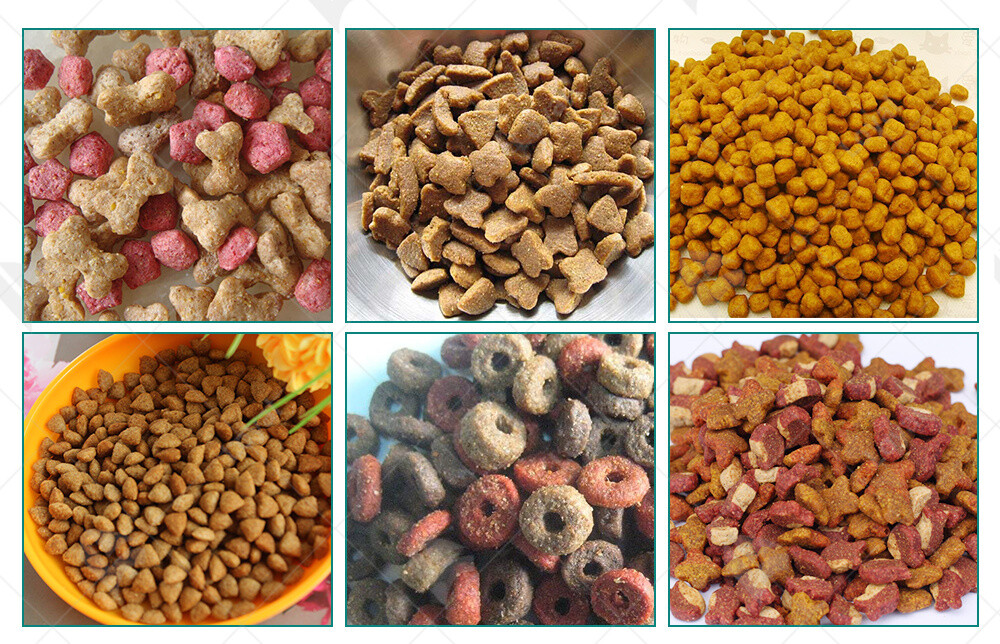
Choosing the Right Machine
When selecting a dog food extrusion machine, manufacturers must consider various factors to ensure optimal performance and efficiency. Two reputable manufacturers in the industry are LOYAL and GEA. Below is a simple comparison between their machines:
|
Aspect |
LOYAL Dog Food Extruder |
GEA Dog Food Extruder |
|
Capacity |
High |
Medium to High |
|
Flexibility |
Versatile |
Customizable |
|
Control System |
PLC-based |
HMI-based |
|
Maintenance |
Easy |
Requires Regular Maintenance |
|
Price |
Competitive |
Premium |
LOYAL dog food extruders are known for their high capacity and versatility, making them suitable for large-scale production operations. They feature a user-friendly PLC-based control system and are relatively easy to maintain, offering a cost-effective solution for pet food manufacturers.
On the other hand, GEA dog food extruders offer medium to high capacity and can be customized to meet specific production requirements. They are equipped with an advanced HMI-based control system for precise operation but may require more frequent maintenance compared to LOYAL machines. GEA extruders are priced at a premium but provide excellent performance and reliability.
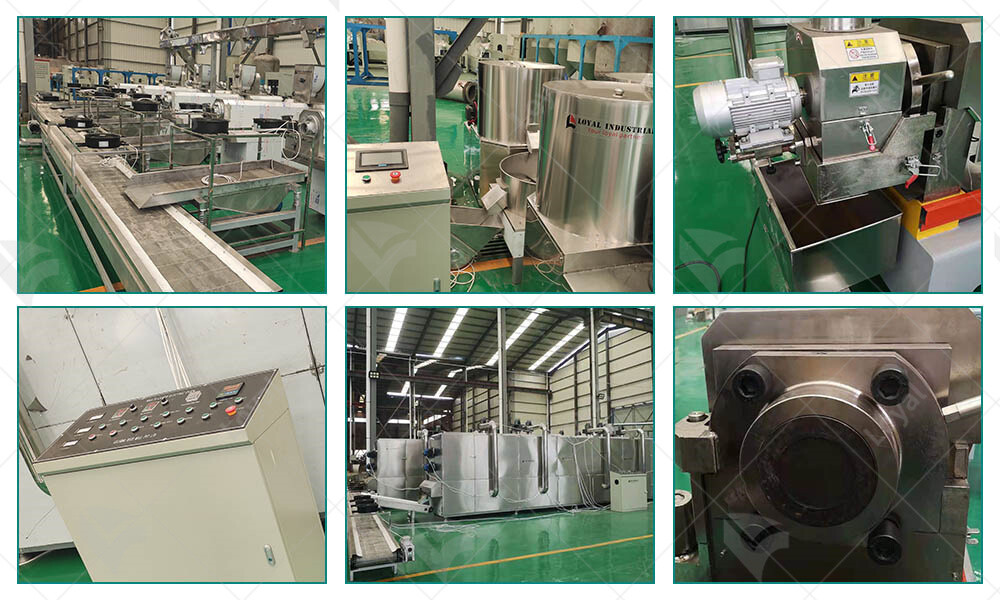
Maintenance and Cleaning Procedures for Dog Food Extrusion Machine
1. Regular Inspection and Lubrication: Routine inspection of the machine's components is essential. Check for any signs of wear and tear, such as damaged screws or worn-out die plates. Lubricate moving parts according to the manufacturer's recommendations to prevent friction and ensure smooth operation.
2. Cleaning of Hopper and Feed System: Start by disconnecting the power source and removing any residual dog food from the hopper and feed system. Use a brush or compressed air to remove debris and food particles that may have accumulated. Thoroughly clean the hopper and feed screws to prevent contamination between batches.
3. Die Plate and Cutting Mechanism Maintenance: The die plate and cutting mechanism play a vital role in shaping and cutting the extruded dog food. Remove the die plate and cutting blades carefully, following the manufacturer's instructions. Clean them thoroughly to remove any leftover food particles or residue. Inspect for any signs of damage and replace if necessary to maintain product quality.
4. Sanitization of Contact Surfaces: Ensure all surfaces that come into contact with the dog food are thoroughly sanitized to prevent bacterial contamination. Use food-grade sanitizers and follow proper sanitation protocols recommended by regulatory authorities. Pay special attention to areas prone to buildup, such as the extruder barrel and die assembly.
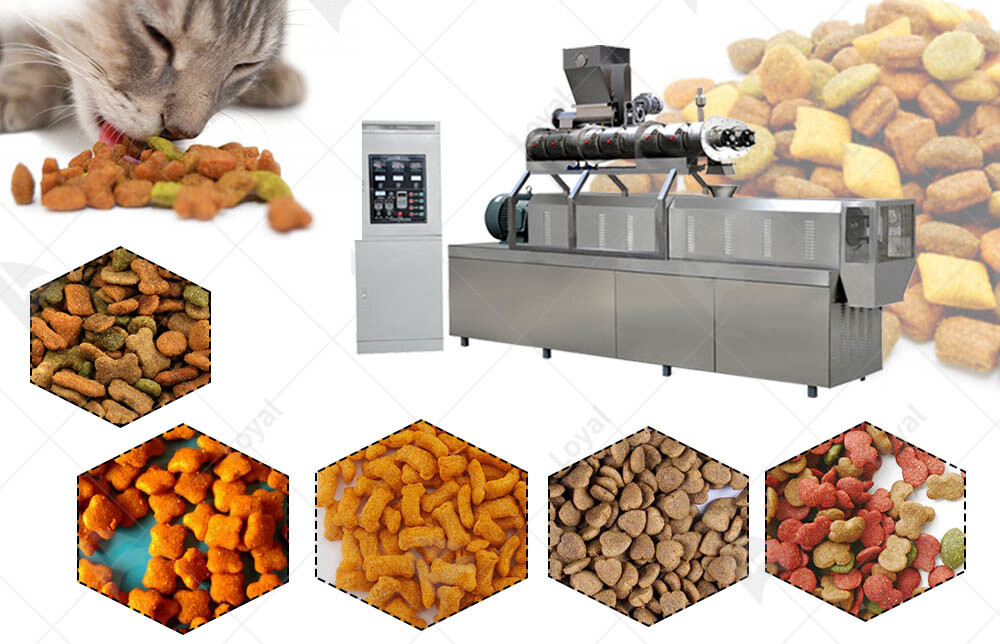
Common Applications of Dog Food Extrusion Machine in Pet Food Industry
1. Dry Kibble Production: One of the primary applications of dog food extrusion machines is the production of dry kibble. These machines can efficiently process a wide range of ingredients, including meat, grains, and vegetables, to produce uniform and textured kibble suitable for different dog breeds and dietary preferences.
2. Treats and Snacks Manufacturing: Extrusion technology enables the production of a diverse range of dog treats and snacks, including biscuits, bones, and chewy snacks. Manufacturers can create customized formulations with various flavors, shapes, and textures to cater to consumer preferences and market demands.
3. Functional and Specialty Foods: Dog food extrusion machines are used to produce specialized pet foods targeting specific health concerns or dietary requirements. This includes formulations for weight management, digestive health, joint support, and skin and coat care. Ingredients such as probiotics, antioxidants, and omega-3 fatty acids can be incorporated into the extruded products to provide added nutritional benefits.
4. Wet Food Extrusion: Some advanced extrusion machines are capable of producing wet or semi-moist dog food products. These formulations typically contain higher moisture content and may include meat chunks or gravy-like textures. Wet extrusion allows for the incorporation of perishable ingredients and enhances palatability, appealing to dogs with finicky appetites.

Advancements in Dog Food Extrusion Technology
One significant advancement is the development of multi-functional extrusion machines equipped with advanced control systems. These machines allow for precise regulation of various parameters such as temperature, pressure, and moisture content, resulting in better product consistency and quality.
Another notable advancement is the integration of cutting-edge materials and manufacturing techniques in the construction of extrusion equipment. This includes the use of high-grade stainless steel and advanced coatings that enhance durability, corrosion resistance, and hygiene standards.
Advancements in automation and robotics have streamlined production processes and reduced the need for manual intervention, leading to increased productivity and cost-effectiveness. Automated systems can precisely monitor and adjust various parameters in real-time, ensuring optimal performance and minimal waste.
These advancements in dog food extrusion technology have not only improved the efficiency and quality of pet food manufacturing but also opened up new possibilities for product innovation and customization to meet the evolving needs and preferences of pet owners.
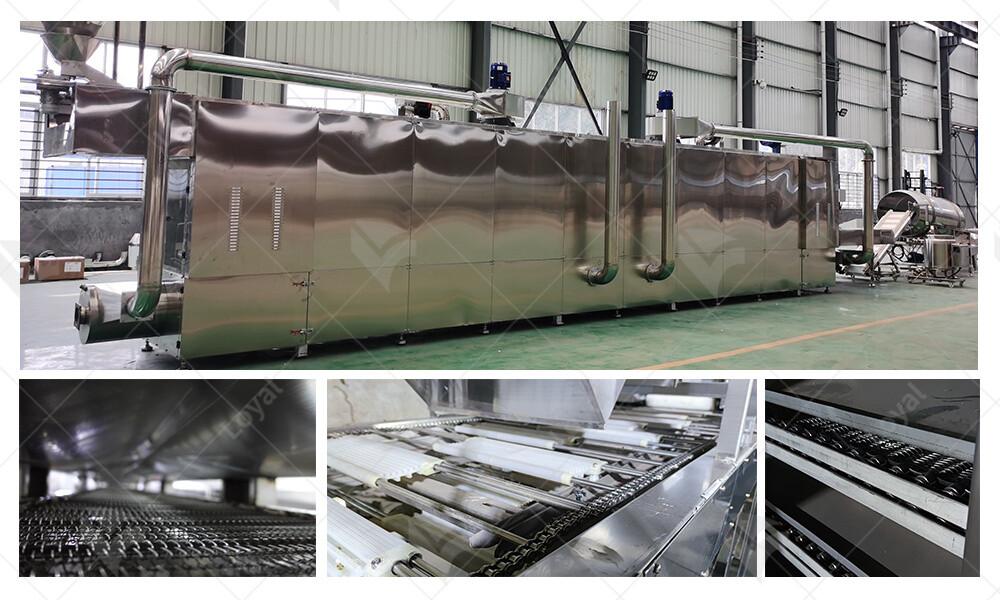
Applications and Market Trends
One of the primary applications is the production of dry kibble, which remains the most popular and widely consumed form of dog food globally. Extrusion technology allows for the precise control of texture, shape, and size, resulting in uniform and visually appealing kibble pellets that meet the nutritional needs of dogs.
Another growing application is the manufacturing of functional and premium dog food products formulated to address specific health concerns or dietary preferences. These include grain-free, hypoallergenic, and high-protein formulations that cater to the increasing demand for natural and specialized pet foods.
In terms of market trends, the pet food industry continues to experience steady growth driven by factors such as urbanization, rising disposable incomes, and increasing pet ownership rates. Moreover, there is a growing emphasis on sustainability, traceability, and transparency in pet food production, prompting manufacturers to invest in eco-friendly practices and premium ingredients.
Technological advancements such as the Internet of Things (IoT) and data analytics are reshaping the pet food industry by enabling manufacturers to gather real-time insights into consumer preferences and behavior. This allows for more targeted marketing strategies and product innovation initiatives to stay competitive in the dynamic marketplace.
References
1.Food Processing: https://www.foodprocessing.com/
2.Food Engineering Magazine: https://www.foodengineeringmag.com/
3.Food Manufacturing:https://www.foodmanufacturing.com/
4.Food Dive:https://www.fooddive.com/
5.Food Business News: https://www.foodbusinessnews.net/
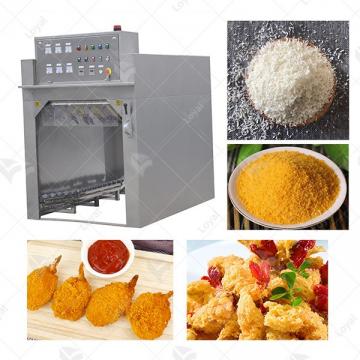 Commercial Japanese Panko Bread Crumb Grinder Machine
Commercial Japanese Panko Bread Crumb Grinder Machine Japanese Bread Crumbs Processing Line
Japanese Bread Crumbs Processing Line Automatic Cookies Making Machines
Automatic Cookies Making Machines Fully Automatic Biscuit Making Machines
Fully Automatic Biscuit Making Machines